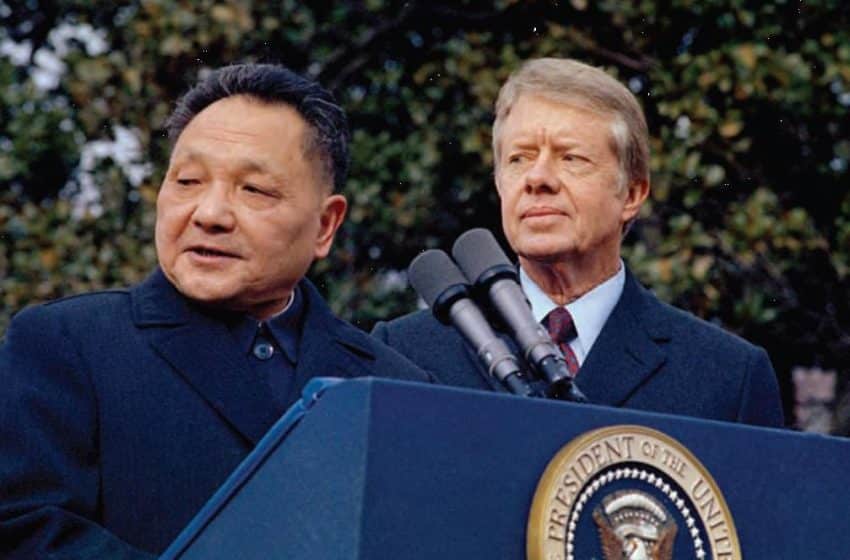January Transfer Window: China’s Million-Dollar Dream of Soccer World Domination
For well-known soccer players who have given Europe a good run, plying their trades in the ambitious Chinese Super League is becoming a popular career move.
A rising power in the global transfer market, the CSL has shelled out for some of the splashiest — if not most curious — signings during the January transfer window, with nearly $150 million being forked out on new players.
Notably, Brazil international Ramires, still only 28, was signed from Chelsea for a reported $28.5 million by Jiangsu Suning FC, whose manager Dan Petrescu once starred for the English club.
Last week 29-year-old Colombian Fredy Guarin was sold by Inter Milan to Shanghai Greenland Shenhua for a reported $14 million, with the club throwing in a generous $6.5 million salary to boot.
Last June another Brazilian, ex-Tottenham midfielder Paulinho, 27, moved to regional heavyweights Guangzhou Evergrande, also for a reported fee of $14 million.

Foreigners not new
Signing foreigners is nothing new for Chinese clubs, who have been operating under a 4+1 policy (four internationals plus one Asian player) since the league was formed 12 years ago.
In fact, more than 150 Brazilians alone have played in the CSL, with 22 of them involved in the 2015 campaign, according to the Mailman Group, a Chinese sports strategy agency.
But what’s unusual about this activity — aside from record-breaking fees achieved while China’s economy is slowing — is that recognizable players from big clubs are moving to a wild-card league while still in their footballing prime.
“A few years back it wasn’t like that. It was not possible for Chinese clubs to sign big players like they are doing now,” Darko Matic, a Croatian midfielder with Beijing Guoan entering his tenth year playing in China, told CNN.
“Maybe 10 or 15 years ago Chinese teams would sign players who are finishing their careers, like 35 or 36-year-old players,” he adds. “Now they are signings who are really in a good football age.
“Of course, if you want players at a good footballing age to come to China — to come to a country where the football is still developing — you have to pay more than the market value of the player, really.”
Continental leap
And how. A few of the most recent crop have made the cross-continental leap after peaking in Europe, with their previous club’s brand recognition playing in their favor.
Guarin, an attacking midfielder, had scored just one goal in 16 matches for Inter this season and the Italian side had reportedly been trying to offload the player for two years before China came knocking.
Paulinho arrived at Spurs with much fanfare in 2013 and a $24 million fee, but left fans disappointed; the London team was grateful to salvage $14 million from his sale.
Ramires had his moments as a Chelsea first-team player, but became an afterthought in a dysfunctional unit this season. It’s safe to say no club in Europe would have paid nearly as much for the man who notched only six goals in his last 50 appearances.
Striker Gervinho was considered a bust at Arsenal before becoming a pivotal player in Italy’s Serie A with AS Roma, scoring 17 goals in 71 appearances.
Roma, which purchased the 28-year-old Ivorian for a reported $8.7 million in 2013, more than doubled its money — reportedly receiving nearly $20 million for him from Hebei China Fortune FC.

World Cup ambition
The recent spending lies in part with a policy spearheaded by Chinese President Xi Jinping of putting cash to work in the league, with an eye to winning a World Cup bid and one day winning the tournament.
So far, China’s brief spotlight on the international stage stood at the 2002 World Cup, where the team failed to score a single goal. The tournament was hosted by regional neighbors South Korea and Japan — countries that have advanced far ahead of China in soccer terms.
“Are they overpaying? In a word yes,” says Simon Chadwick, professor of sports enterprise at the UK’s Salford University, who says the CSL is partly funded by the state, though to what degree is unclear.
“It’s a brand positioning statement. It’s telling the world ‘We’re here and this is what we’re doing,'” he adds. “In terms of China’s reputation to be an important nation globally, to be good at football is a large part of that.”
Importing talent on the pitch and in management also serves as a way to raise the standard of the league, says Chadwick, citing the success of Guangzhou Evergrande.
The two-time Asian Champions League winner and five-time defending league champion is coached by Brazilian World Cup winner Luiz Felipe Scolari.
Former England and Manchester City coach Sven-Goran Eriksson has been in China since 2013. His club Shanghai SIPG signed Ghanaian striker Asamoah Gyan last year, and features two Brazilians and an Argentine.
Headline-grabbing transfers should come with a caveat, says Matic. Teams should look for talents who have a record of stability at former clubs, and who are not easily rattled by a change of system.
“They have to sign players and coaches who are here to help Chinese football develop, not only to come here for the money,” he says. “If you see a coach who is changing teams every six months, then he is probably not the right type of guy to sign.”

Buying prestige through soccer
Another fuel to the footballing economy is the status that owning a major sports team can bring to a spectacularly wealthy entrepreneur, Chadwick says.
In 2014, Alibaba’s billionaire founder Jack Ma reportedly bought 50% of the Guangzhou club after drinks with co-owner Xu Jiayin of Evergrande real estate, while last week another property mogul, Wang Jianlin, purchased a 20% stake in Spain’s Atletico Madrid.
In December, two quasi-governmental Chinese investment arms paid $400 million for a 13% stake in Manchester City, largely to gain access to the club’s training academy and football campus ideology says Chadwick.
However, not all Chinese football deals have been successful.
In 2013 former Chelsea stars Didier Drogba and Nicolas Anelka abruptly departed Shanghai Greenland Shenhua FC, where the latter served as player-coach, for more familiar European pastures.
One month later Shanghai was stripped of its 2003 league title as part of a broad match-fixing crackdown. In total, 12 clubs were handed punishments, while 33 people, including disgraced officials Xie Yalong and Nan Yong, received life bans, according to the official Xinhua news agency.
“Chinese football historically has had a governance problem,” says Chadwick. “While corruption standards are improving, they are still not good enough. So anyone going to play in China has to be mindful that there may still be some problems. For example, payment of fees, be it transfer fee or wages.”
Cultural adaption
“There are some clubs around the league that are notoriously not on time (with payments),” says Australian player Erik Paartalu, who lasted one season with Tianjin Teda FC.
Paartalu — who says he was paid on time — counts the experience of moving with his fiancée to Tianjin, a city of over 14 million, as “one of the most challenging times in our lives, but it was the most rewarding.”
Even so Paartalu was left scrambling to find another team after he was dropped by Tianjin just ahead of the 2014 season. Because of the league’s scheduling, his only option was to sign with a club in Thailand, where he played for one year.
The cultural adaptation of big-name signings is key if they are to flourish in their new homelands, says the 6-foot 4-inch defensive midfielder, now at Melbourne City.
“It’s very difficult. Every other place it’s pretty easy to integrate; with China it’s completely different to any other country,” Paartalu says.
“Just trying to get around every day and talk to the taxi driver, that took a lot of time. Food was a problem at the start because I didn’t necessarily like what I was being fed, but you find there are places to go.”

Attractive salary
Like Paartalu, Matic, a rugged 6-foot defensive midfielder, fitted the mold of the foreign player Chinese clubs were looking for at the time.
“(Chinese scouts) are always watching if you are really quick; if you are a leader or really tall and can keep the ball,” he says.
Matic bounced around minor leagues in Bosnia, Switzerland, Slovakia, Germany and Sweden, before resisting advances from Chinese clubs.
“My first thoughts were no, I’m not going to China,” he recalls. “In Europe they don’t have a great picture of China, about the infrastructure, about the people, about the culture.”
After doing some research and thinking it over with his wife, however, he accepted an offer from Tianjin. The pay didn’t hurt either. “I was earning five to six times more in China, so of course, it makes your decision easier, to be honest.”
Two years into his Chinese experience, Matic received an offer from Beijing Guoan and elected to keep his family in China, even enrolling his daughter into a locals-only kindergarten.
“One of the reasons, of course, was money, but one of the other reasons was to see the culture and the development of such a huge country,” he says.
It helped that Matic — a polyglot who claims to speak nine languages fluently — picked up Mandarin, and was able to communicate to his teammates and conduct interviews in the local dialect with ease “I never took one lesson,” he says.
Matic, in fact, has been adopted by the Chinese as one of their own — so much so that he is in consideration to receive a rarely-given permanent residency.
Arguably the only other Western athlete as embraced in China is the Beijing Ducks’ star point guard Stephon Marbury.
The former NBA All-Star has won three CBA championships in Beijing and has stated his intention to call China home after his basketball career ends.
“We both have one thing in common,” says Matic, who has met Marbury a number of times. “If you stay for a few years in China — if you adapt to the city, to the culture, to respect them — you can feel and you can see the love that the people give to you.
“I played in Europe, and I never had such love from people around me and helping me so much like they do in China.”
By MOTEZ BISHARA on Feb 1 2016, on CNN.
Read more here








